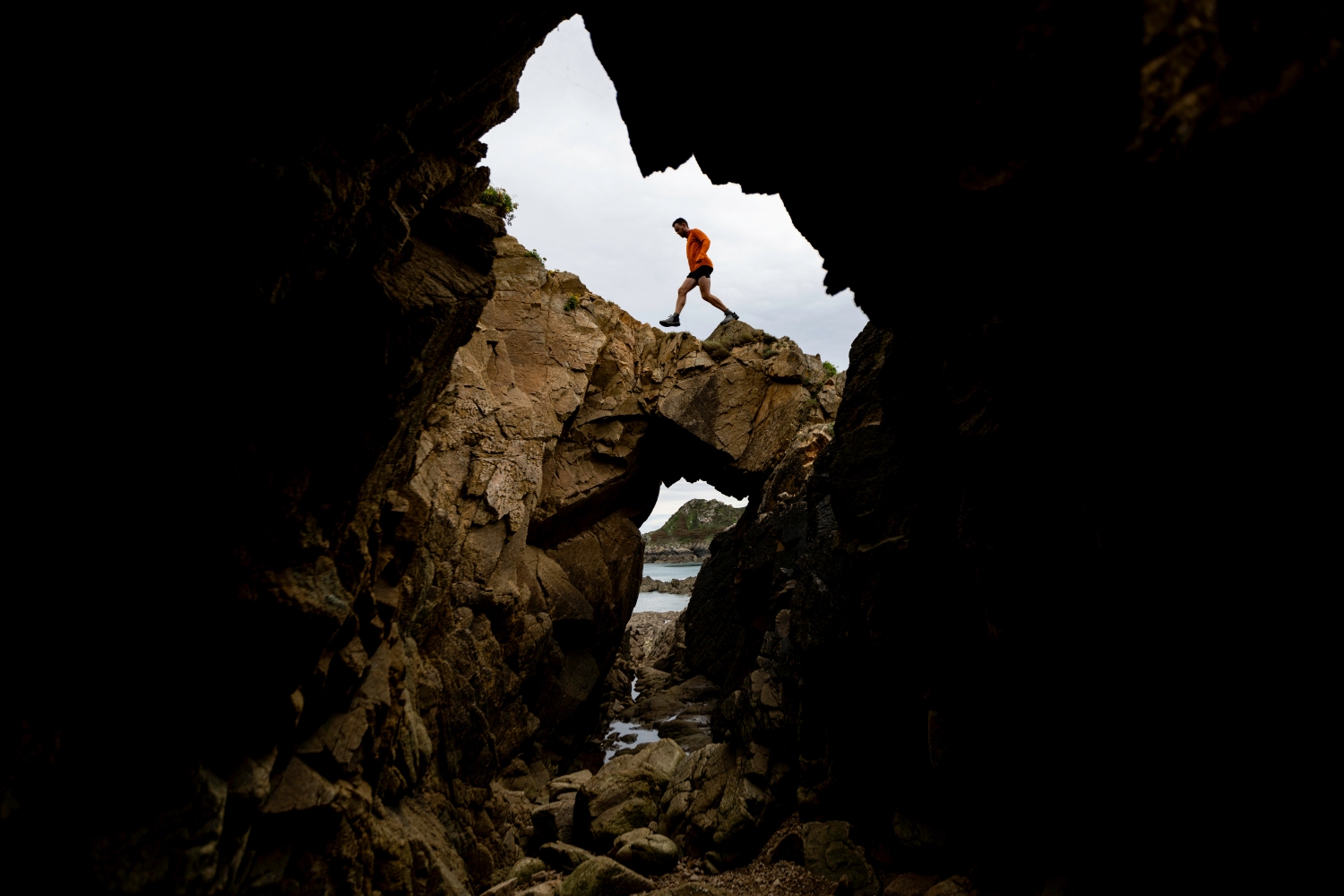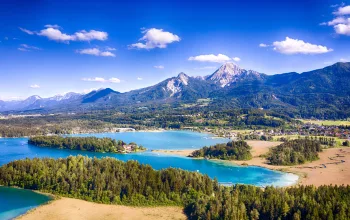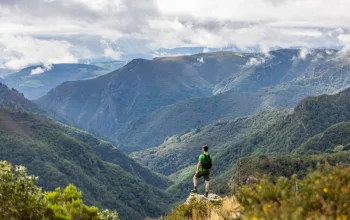With its wild cliffs, golden beaches and idyllic fishing villages, Brittany is a place synonymous with the coast. In fact, so long is the région’s arcing 2,800km shoreline - which faces north to the English Channel, west to the Atlantic and south to the Bay of Biscay - it accounts for one third of France’s entire coastline.
This makes it a paradise for surfers, kayakers and sailors alike, but - in truth - you don’t have to be on the water to indulge in the wonders of Brittany’s coastline. From the reassuring safety of dry land, you can experience everything special about Bretagne by hiking and cycling the region’s best coastal routes.
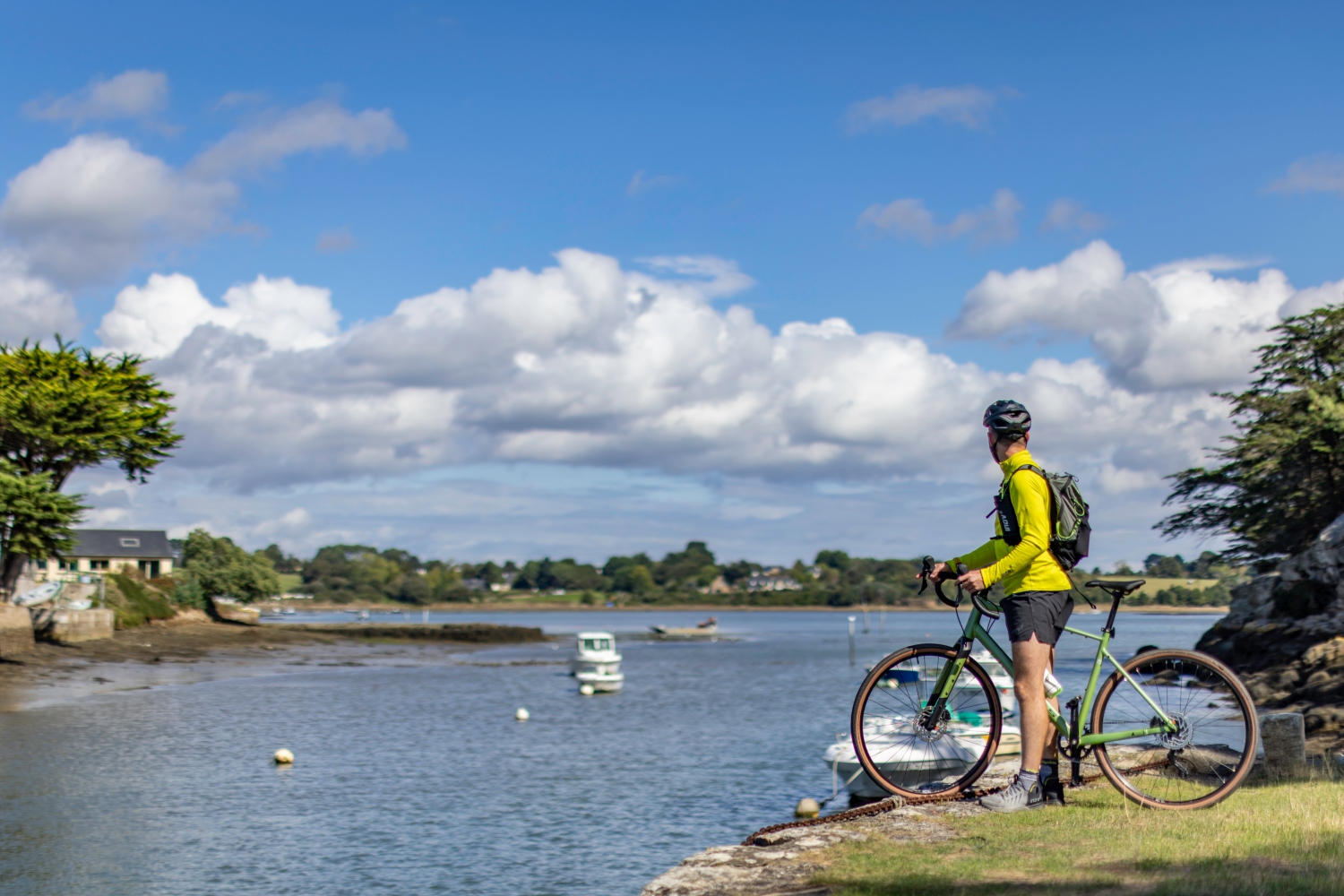
Hiking & Biking Round Brittany’s Coast
“This is where I come for escapism - it’s such a beautiful spot to get away from it all”, says cycling guide Emilien, whose wavy blonde hair and chilled-out demeanour is more surfer dude than pedal pro. He grew up in these parts, spear-fishing, free-diving and trail running his way to a deep passion for this corner of northern Bretagne. Together we’re exploring the rugged headlands and hidden beaches of the beautiful Goëlo coast on two wheels - and I’m finding his genuine enthusiasm for these Celtic lands infectious. “I thought Brittany was just family-friendly campsites and gentle seaside strolls to crêperies - but this feels genuinely adventurous”, I reply, seduced by the blue skies and coastal majesty of the place.
It’s day four - my final day - of a hike’n’bike odyssey around a few small sections of Brittany’s sprawling shores. It has felt like a journey along a thin line between the land and sea: a hinterland between two worlds. Always to my left is the ocean, vast and untamed and perpetual. Always to my right is the land, a chameleon changing its colours with every few miles, from agricultural fields and dense forest to seaside towns and fishing harbours. And in-between I walk and cycle a narrow band of coastal loveliness, a slender strip of paradise shared only with the seabirds and the sound of the crashing waves.

Emilien, Dave (our film-maker) and I sit atop a concrete plinth, a remnant of the Second World War, and tuck into jambon et fromage baguettes as we soak up the Goëlo grandeur. With our e-bikes stashed to one side, it’s an ideal lunch stop location. Below us a snaking promontory juts out, almost as if the land is extending an olive branch of friendship to the sea. A solitary yacht sails across the horizon and white seabirds soar overhead. “What do you make of our Brittany adventure then?”, asks Dave, recognising the setting and moment is ripe for reflection. “Full of surprises”, I reply.
Rewind 96 hours and I arrive at the Gulf of Morbihan, a natural harbour said to have as many islands as there are days in the year. I’m here in the “Pearl of Southern Brittany”, as the gulf is known, to set foot on one of France’s famed grandes randonnées (great walks). Stretching a whopping 2,000km from the abbey-topped island of Mont-Saint-Michel in the north to the bridge of Saint-Nazaire in the south, the GR34 is billed as France’s most famous long-distance walk - a route “steeped in history, salt and sea spray”, where “the spirit of Brittany invades you and wins your heart”.
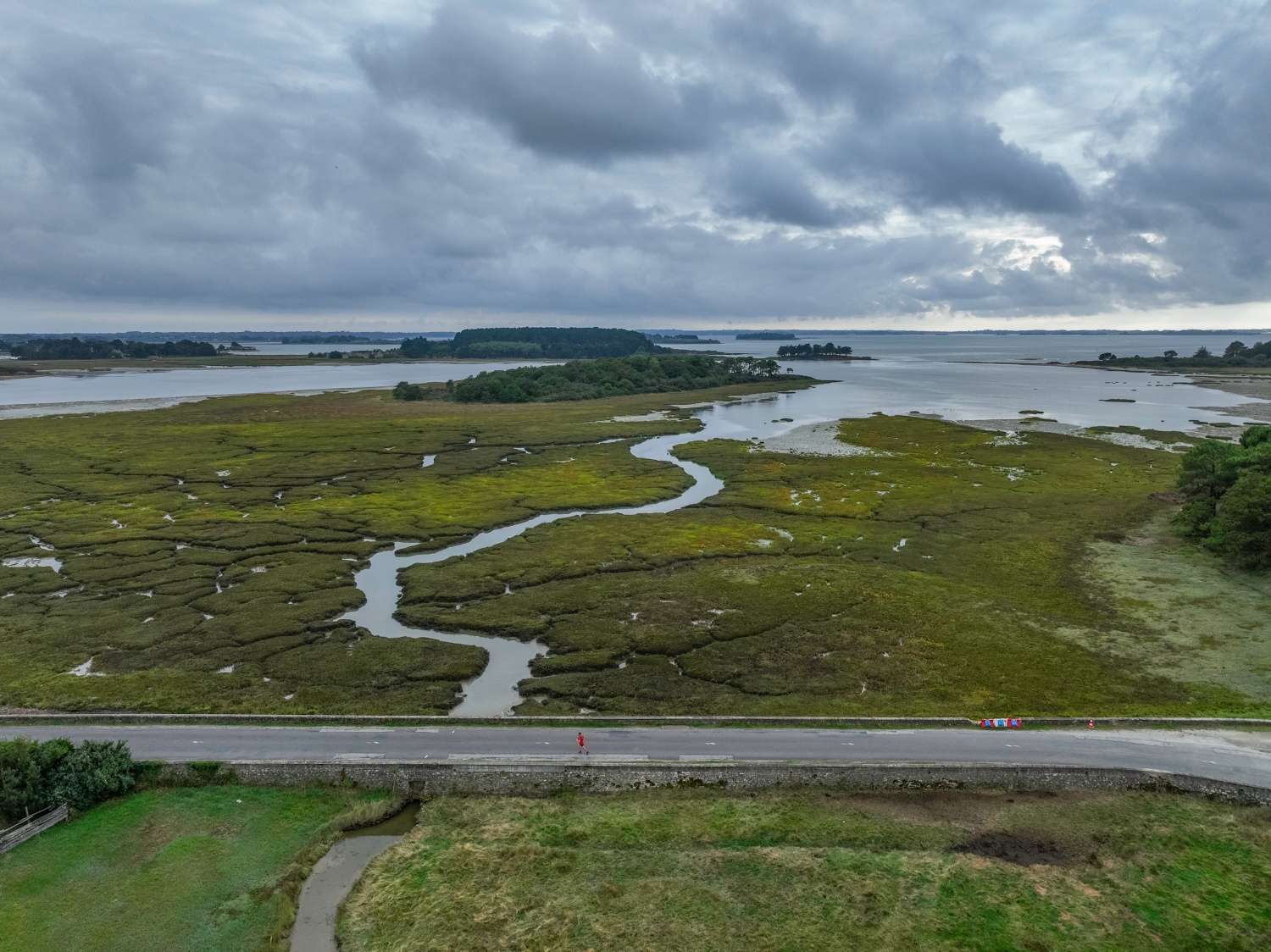
Following in Smugglers’ Footsteps
Created in 1791, the GR34 trail is also known as the Sentier des Douaniers (the Customs Officers’ Path) - so-called because French officials would tramp its entire length seeking to foil the coastal exploits of smugglers - and it has an iconic status in France. It is commonly billed as “the preferred long-distance footpath of the French”, and I’m eager to find out why.
Time is not on my side, however. So I decide to run, not walk, the Sentier des Culs Salés (bizarrely the “path of salty bottoms”), a 21km route from the town of Séné that follows in the footsteps of 19th century salt smugglers. It’s my first chance to dip a figurative toe into the GR34’s waters - and it doesn’t disappoint. As I run alongside expansive salt marshes, tidal bays, sandy beaches and sleepy fishing villages, I taste the salty air on my lips, feel the late afternoon sun on my neck, and let my worries float away on the sea breeze.
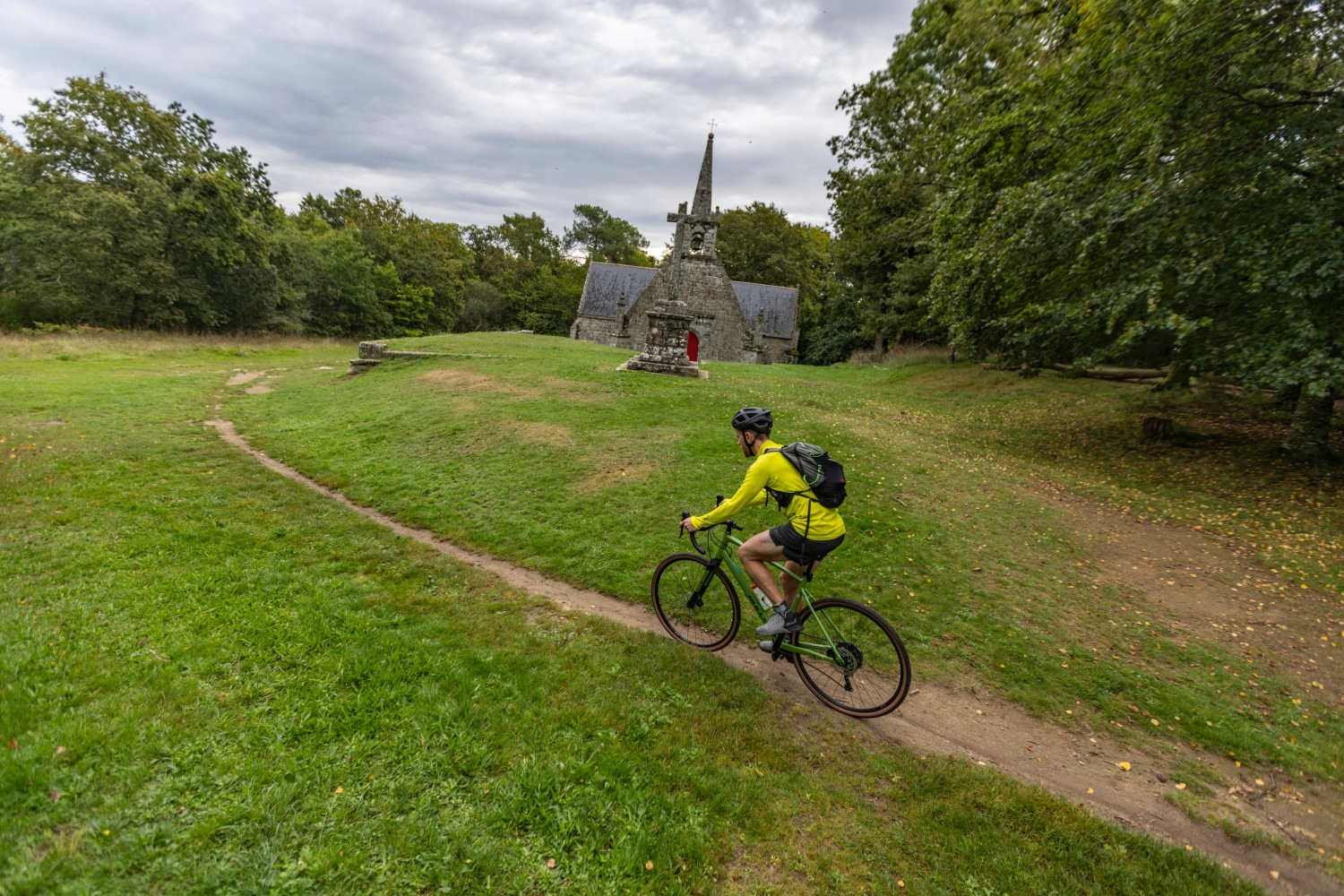
The following day I trade my running trainers for two wheels. The plan? A 40km gravel biking mission around the western shores of the Gulf of Morbihan, starting and finishing in the commune of Baden. We ride inland more than I expect, on tree-lined country tracks and joyously quiet backroads linking sleepy villages. But in Brittany the coast is never far away and - as if the route knows we need a “fix” of hazy coastal views - we’re treated to intermittent glimpses of Pointe d’Arradon, Île-aux-Moines, Port Blanc and Pointe de Locmiquel.
“One million people walk this route every year”, says Didier, our chaperone for the next leg of this whistle-stop tour. We’re now on the northern coastline near Perros-Guirec, hiking a famed (and evidently uber-popular) section of the GR34 between Le Ranolien and Ploumanac’h beach, known as the Pink Granite Coast. Here dramatic tors pierce out the shoreline: weirdly-shaped and chaotically-nonconfirmist, like precariously-balanced Jenga stacks of rock.
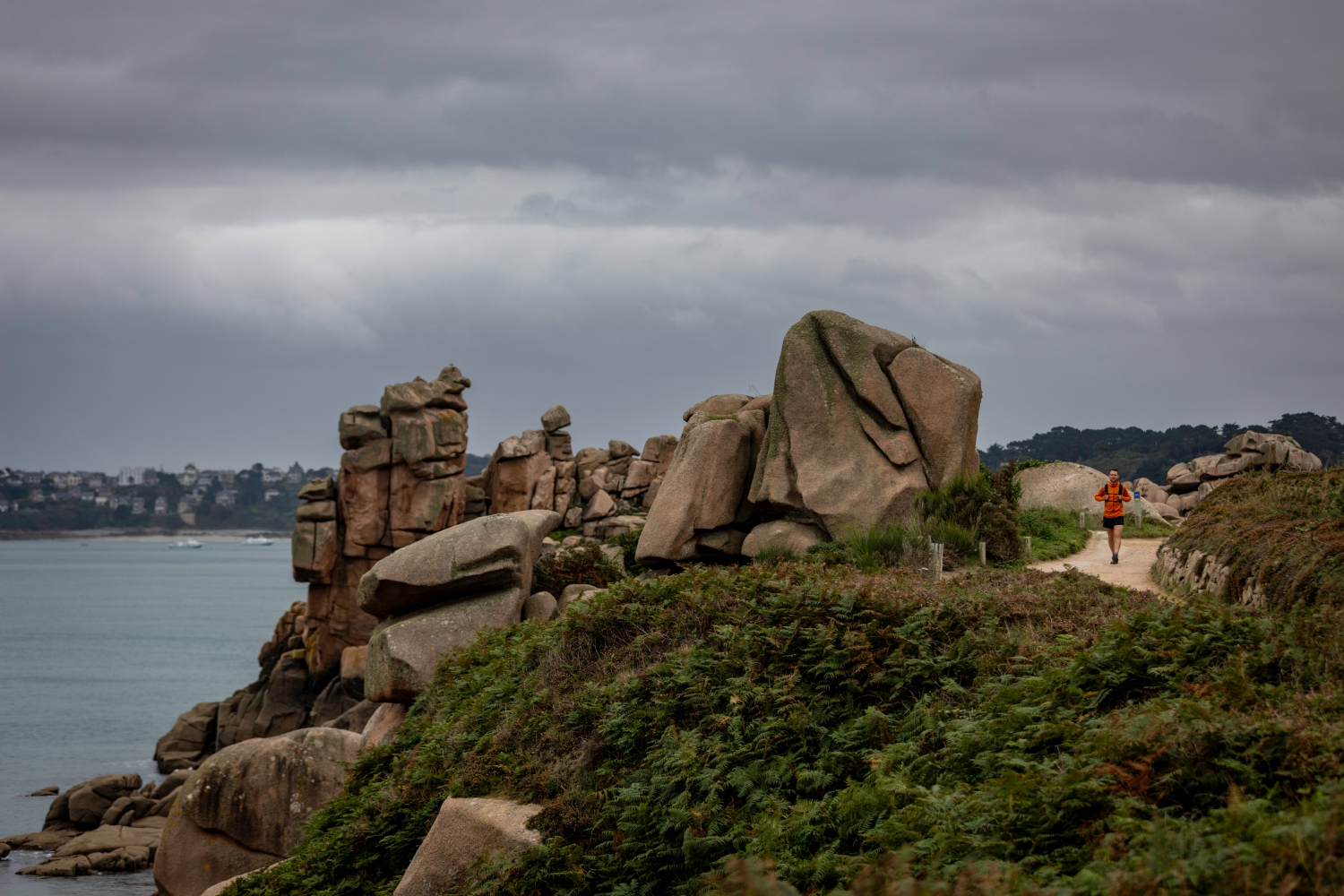
They have a distinctive pinky hue, caused by the presence of the mineral feldspar within the rock - a phenomenon unique to this part of Brittany and only a few other places globally. I’m struck by a strange dichotomy. Perhaps in the 1800s these labyrinthian outcrops served as ideal cover for the illegal operations of cotton, sugar, coffee and tobacco smugglers; now they are beloved for their natural beauty and unique form. That’s some reinvention.
“Shall we get back to the cycling?”, asks Emilien the following day, brushing boulangerie crumbs off his midriff. We’re cycling a section of the 38.5km Vélomaritime (EuroVelo 4) route from Paimpol to Saint-Quay Portrieux on the Goëlo coast, and we still have a decent ride left to complete after lunch. I look into the distance at the route ahead. To one side is the sea, to the other is the land, and in-between is a thin line of coastal loveliness - a narrow band of Brittany where the adventure roars as loud as the crashing waves.
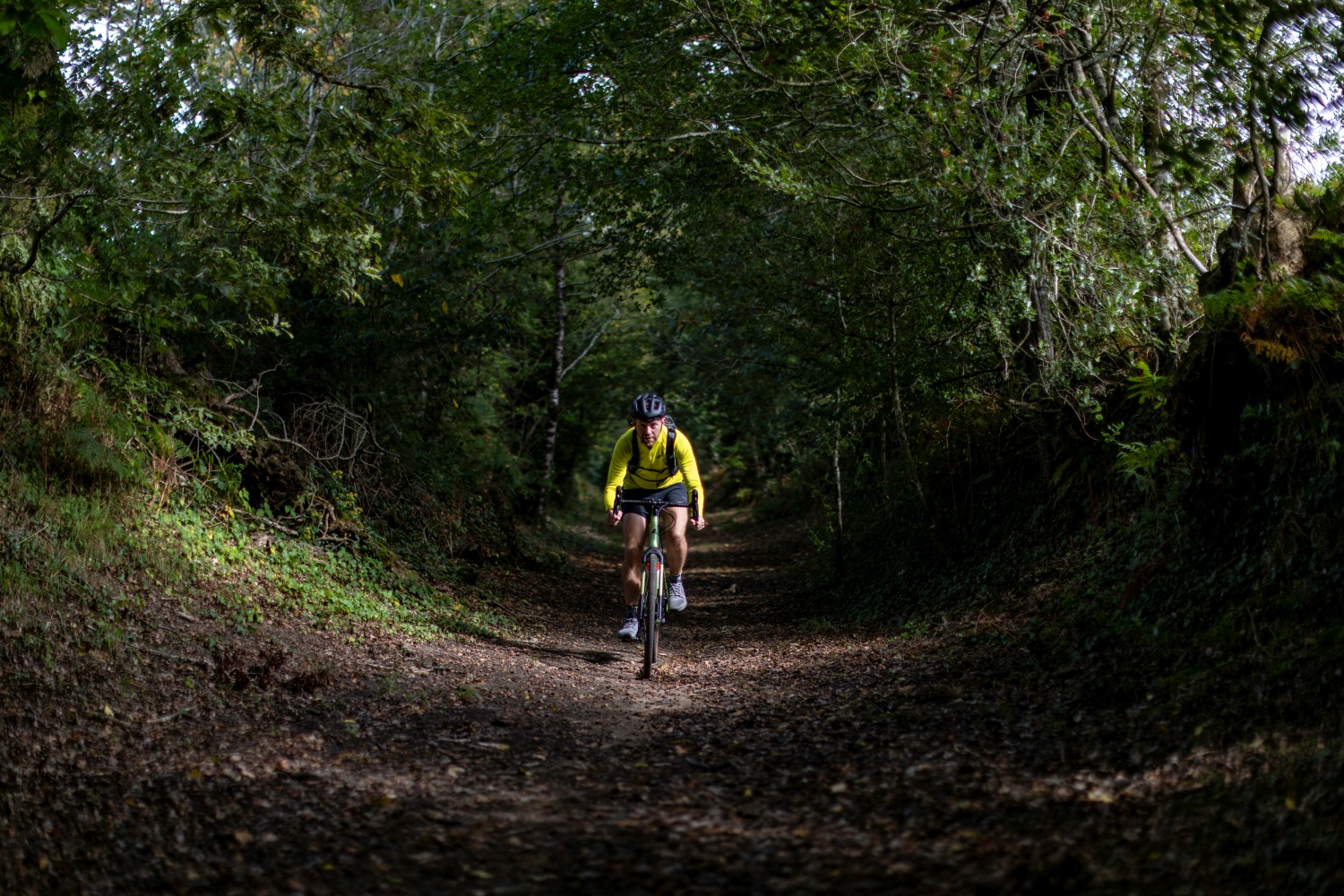
5 More Iconic Cycling & Hiking Routes In Brittany
From beginners to pros, there’s something to suit every hiker and cyclist
Voie 5 Roscoff to Nantes – 400km cycle
A long-term ambition for Brittany is a non-stop cycling path from Roscoff to Nantes, mirroring the coastal route of the GR34 grande randonnée. It’s not yet complete, but several stretches are ready to be cycled including the Côte du Léon, Côte de la Mer d’Iroise and Pointe du Raz.
Le Circuit de Saint-Mathieu – 12km walk
At the tip of the région of Finistère, this circular walk starting and finishing in Plougonvelin passes numerous points of interest including a ruined abbey, historic lighthouse and war memorial. If you’re lucky enough, you might also spot seals and dolphins.
Véloroute 2 Saint-Malo to Redon – 200km cycle
If you fancy a break from the coastline, this gentle route explores the bucolic interior of central Brittany. Starting at the port city of Saint-Malo, the 200km verdant trail heads south via the Ille-et-Rance canal and the Vilaine river, exploring the artistic towns of Dinan and Rennes along the way.
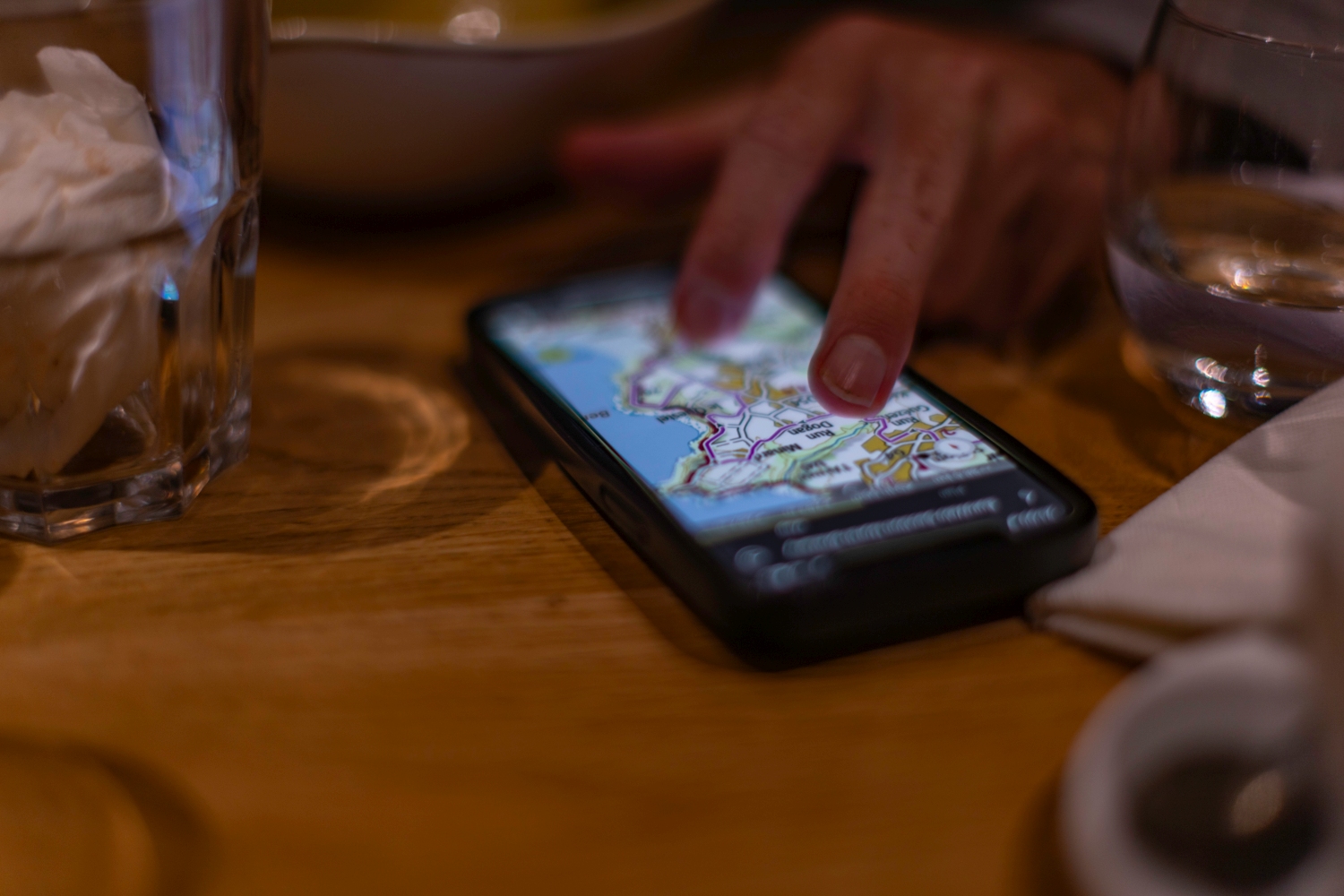
Cap Fréhel to Fort La Latte - 17km walk
The Côte d'Émeraude (Emerald Coast) in northern Brittany – a gorgeous stretch of coastline between Cancale and Cap Fréhel – is known for its high cliffs and translucent waters. This circular walk around the peninsula is one of the area’s best day hikes, delivering “a palette of vibrant colours” and “dizzying” sea views.
Morlaix Bay - 18km walk
Also known as the Le Tour de Carantec, this circular loop around the Carantec peninsula offers a brilliant insight into the beauty of Morlaix Bay – a coastal inlet between Léon and Trégor in northern Brittany. The bay is peppered with islands and islets, and at low tide you can walk as far as charming Île Callot.

5 Other Reasons To Visit Brittany
There’s more to this region than just outdoor activities.
Crêpes and Cider
If you want to eat and drink in true Breton style, it doesn’t get more traditional than a buckwheat crêpe (sometimes called a galette). The classic egg, ham and gruyère filling is ideal for your savoury main, washed down with a local apple cidre, before indulging your sweet tooth with a beurre-sucre crêpe for dessert.
Boutique Hotels
Even if you’re on an adventure-themed holiday, who’d blame you if you peppered in a bit of luxury into your schedule? Brittany is well-served by charming and unique hotels. Boutique options include the 16th century Le Manoir de Kerbot near Sarzeau and Hôtel Les Agapanthes in Paimpol.

Historic Towns
Tear yourself away from the bays and beaches and you’ll be surprised by the allure of Brittany’s towns. From medieval settlements to artistic getaways, these places are steeped in history and ooze Breton cultural charm. The cobbled streets, 15th century houses and fortified castle of Vannes are well worth a visit, for example.
Watersports
From stand up paddleboarding, kitesurfing and wing-foiling to sea kayaking, coasteering and sailing, Brittany is a top-tier destination for watersports. But surfing might be the coolest option. It’s a way of life here – and Bretagne’s coastline is world-renowned for consistent swell and beaches suitable for all levels.
Seafood
Eating a seafood platter by the ocean is one of the great pleasures of a holiday in Brittany. Whether you favour oysters, lobster or mussels, freshly caught fish and shellfish are always on the menu here. Popular options include the beachside Le Coste Mor in Perros-Guirec and Les Terrasses de Bréhat in Ploubazlanec.
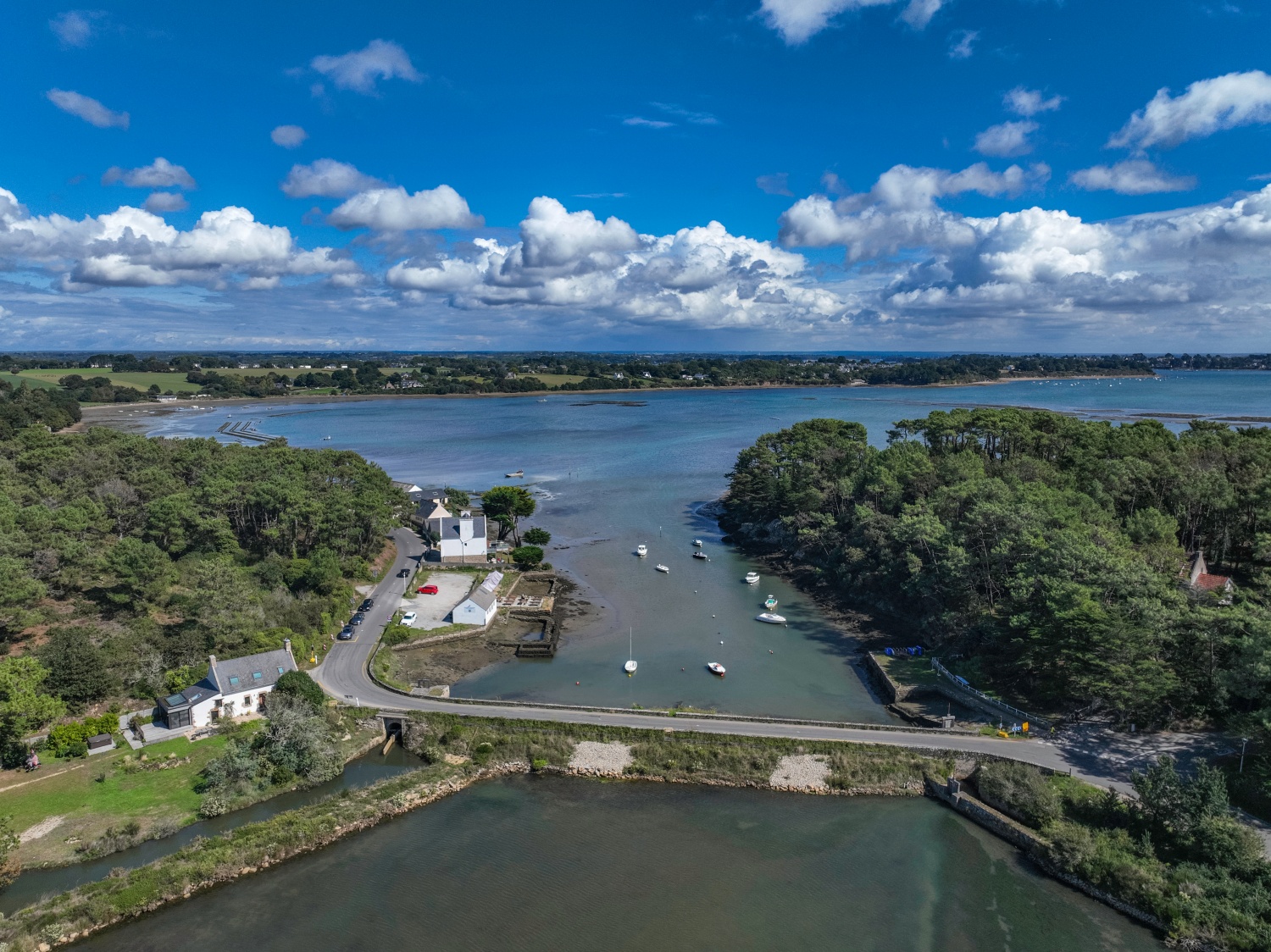
Know how
Our trip
James’ trip was supported by Brittany Tourism who provide adventure inspiration, information and booking links on their website.
Getting there
From London, catch a Eurostar, and with a single change in Paris, you can be in Rennes in less than five hours. You can book European train travel through The Trainline. Alternatively, Brittany Ferries run regular services from Portsmouth and Poole to Saint Malo.
If you have to fly, Ryanair offer flights to Nantes Atlantique, from Edinburgh, Manchester and London Stansted. easyJet also offers flights direct to Rennes, Brittany’s capital City, from London Gatwick, and also fly to Nantes, from Bristol, Birmingham, Edinburgh and London Gatwick.
Where to stay
James stayed at Le Manoir de Kerbot, a four-star spa hotel near Sarzeau, at Le Ranolien, a five-star campsite with views of the sea near Saint Guirec, and at Hôtel Les Agapanthes, near Paimpol.



